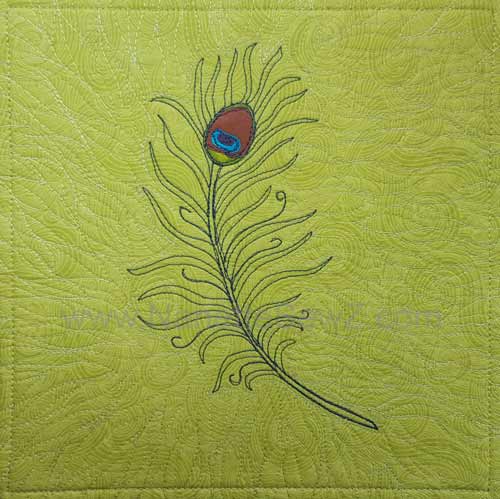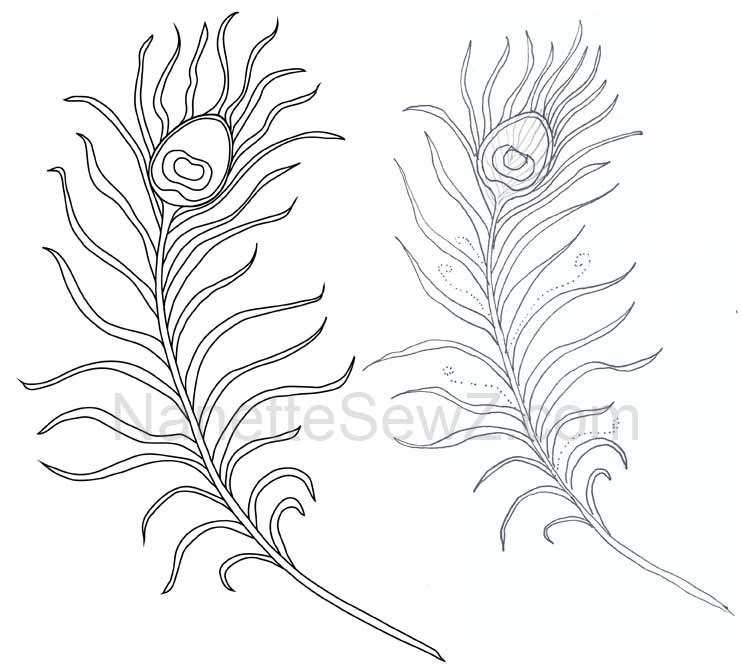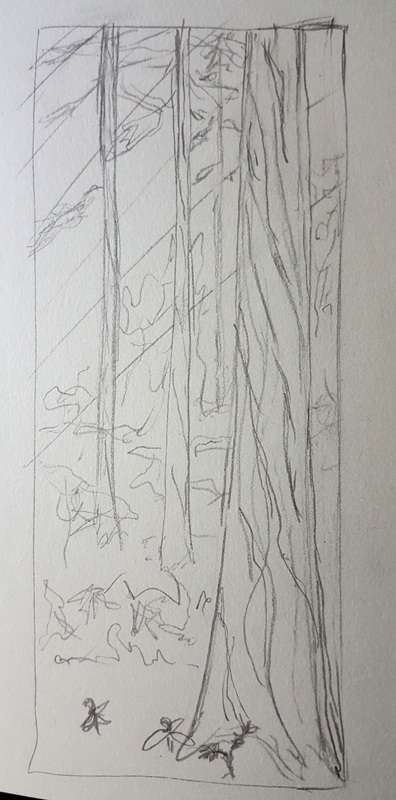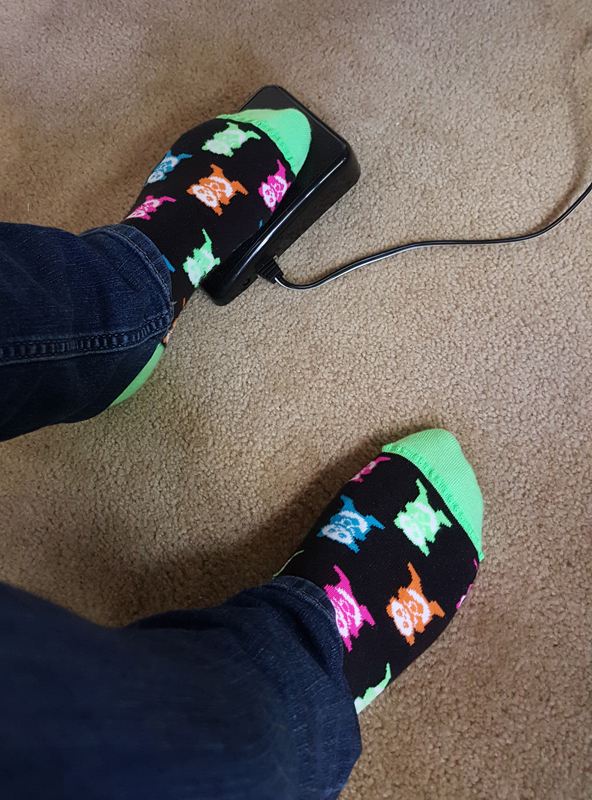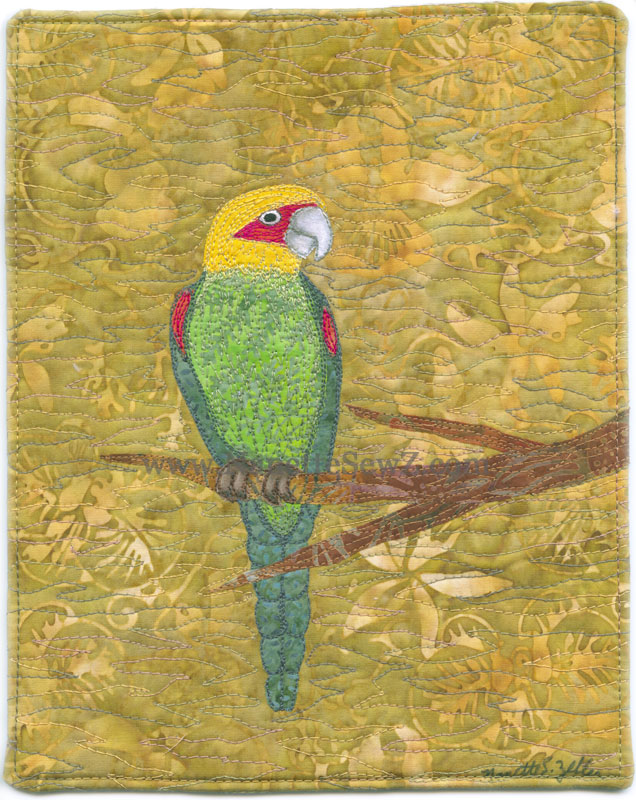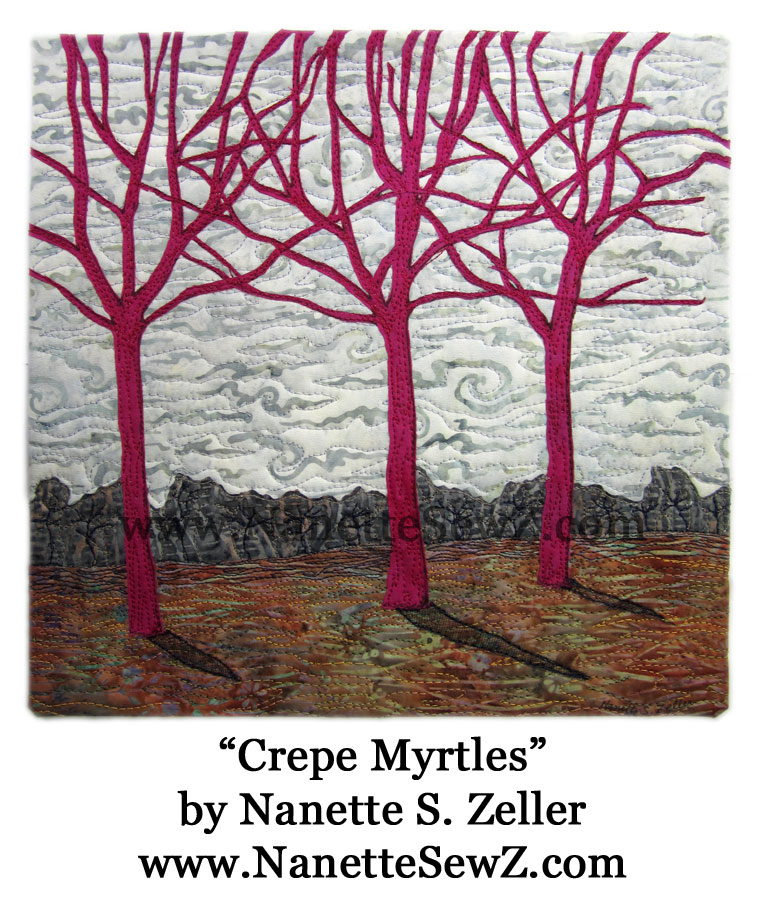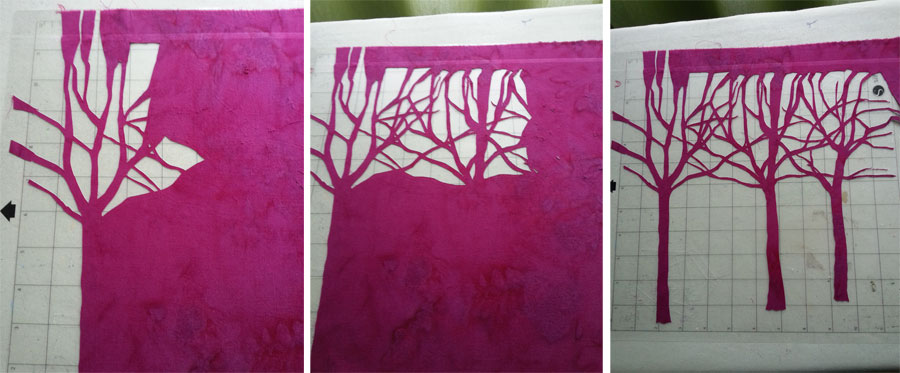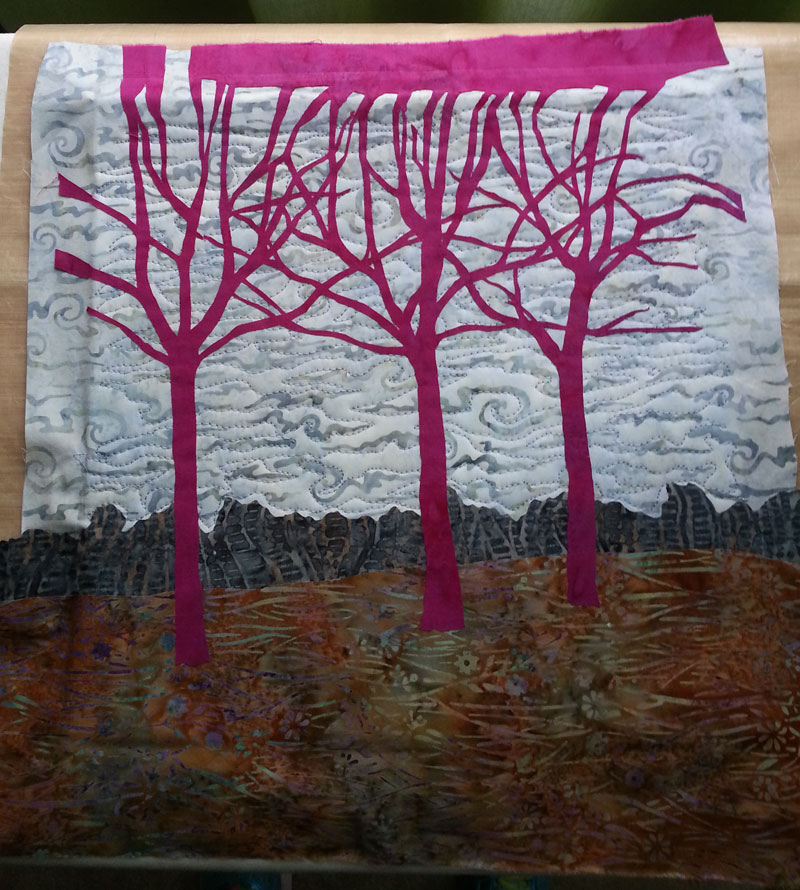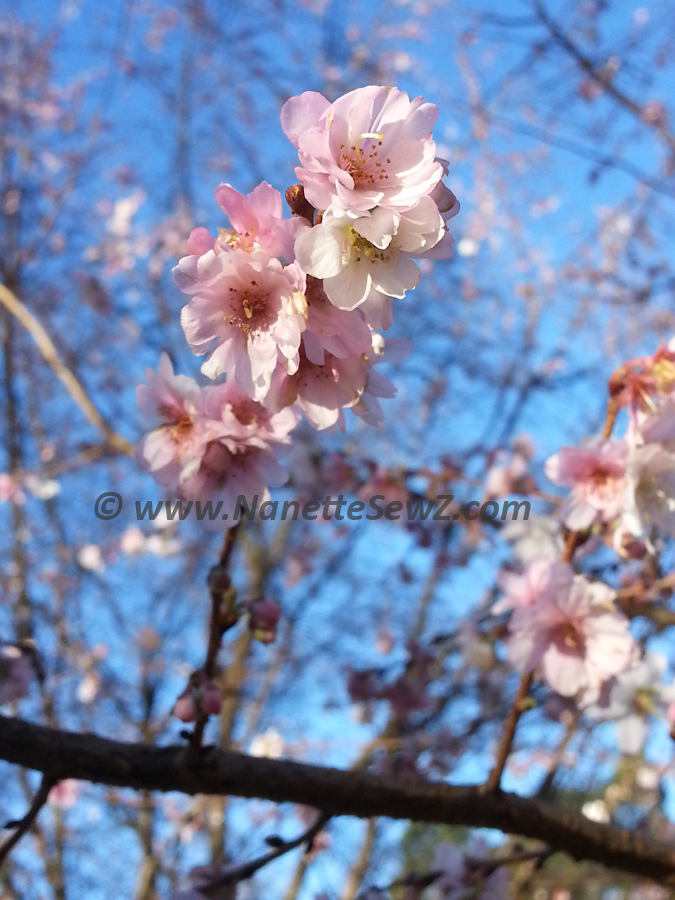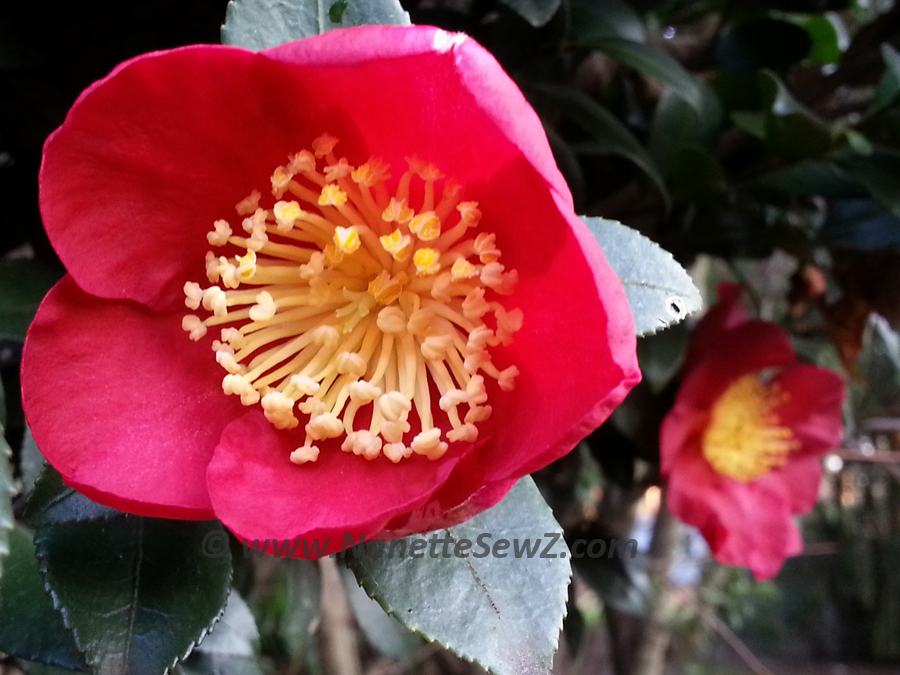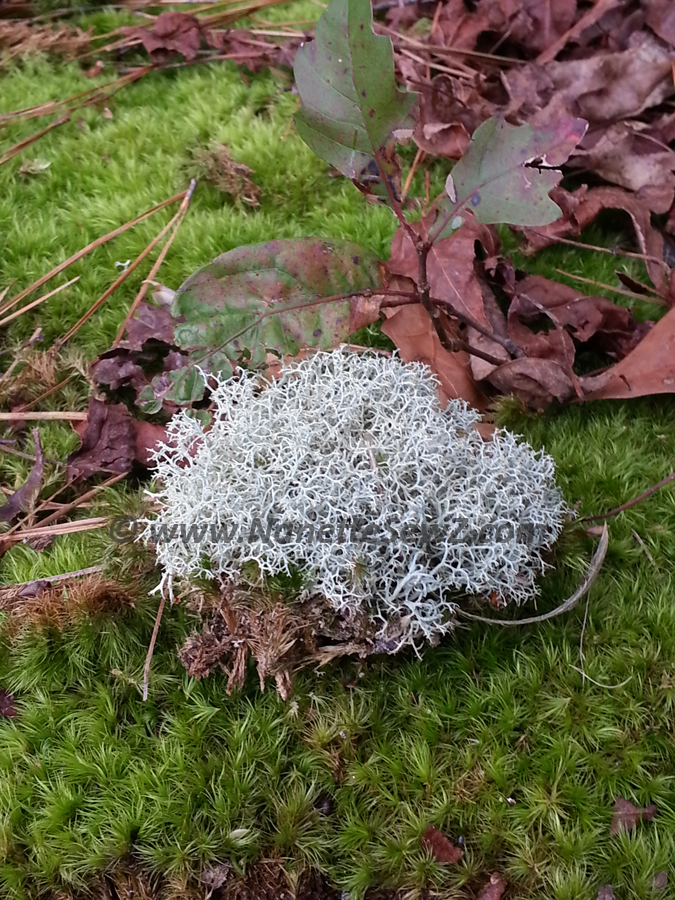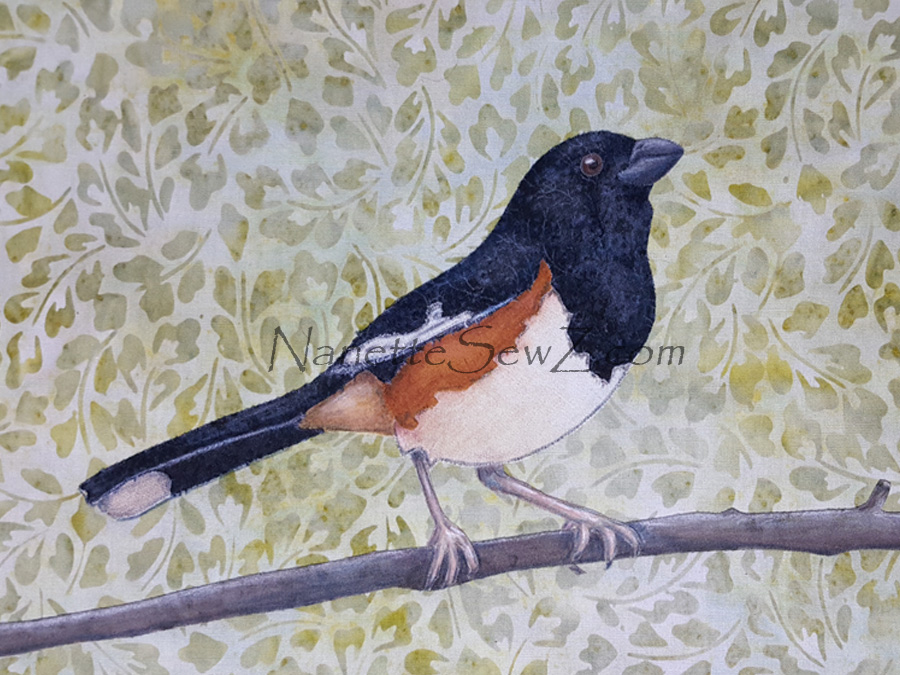 On October 25, I posted a photo of my Eastern Towhee in progress. I start with a basic line drawing which I use to cut out the fabric pieces and fuse them to my background fabric. I hinted that there was more to the process. Today I’m going to share that with you.
On October 25, I posted a photo of my Eastern Towhee in progress. I start with a basic line drawing which I use to cut out the fabric pieces and fuse them to my background fabric. I hinted that there was more to the process. Today I’m going to share that with you.
The one thing I’ve noticed about most fusible applique techniques is that the pieces look flat and cartoon-ish. I’m far from being a realist in my artistic style, but I do crave more realism in my work. In life, objects aren’t 2-dimensional, they reflect light and shadows. That’s what I want to see in my design.
A few years ago, on a whim, I decided to take a Prismacolor pencil drawing class from a local artist and friend, Frank Pierce. I enjoyed the class, but didn’t think I’d every use what I learned. Then, I had the ah-ha moment of, “I wonder if I could use the pencils on fabric?” That started me on a mission of exploration. These colored pencils gave me a tool to add the shading I was looking for. But as with any discovering, I realized there was more to it than just coloring. If you want to know more about my specific process, then you might want to pick up a copy of the Dec17/Jan18 Quilting Arts magazine. There’s an article in there where I explain the techniques I use. I’m pretty excited about the possibilities of using these pencils in my art.
This little bird still isn’t finished. There’s some stitching that needs to get done, but I’ll share that later because right now I have another bird in the works waiting for some realism.
.
.
.
.
See my work and discover my process of “Creating Highlights & Shadows”
Quilting Arts Magazine
December 2017/January 2018
available book stores or online at Interweave Press

